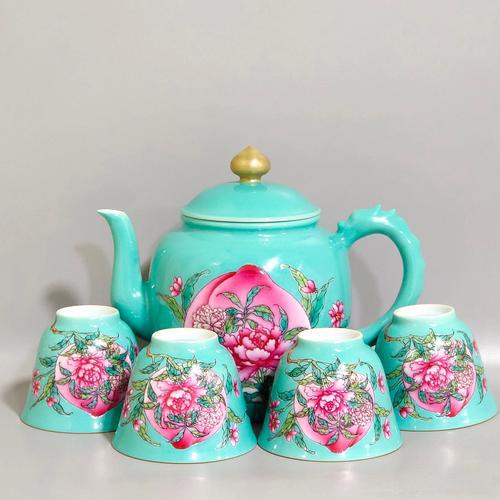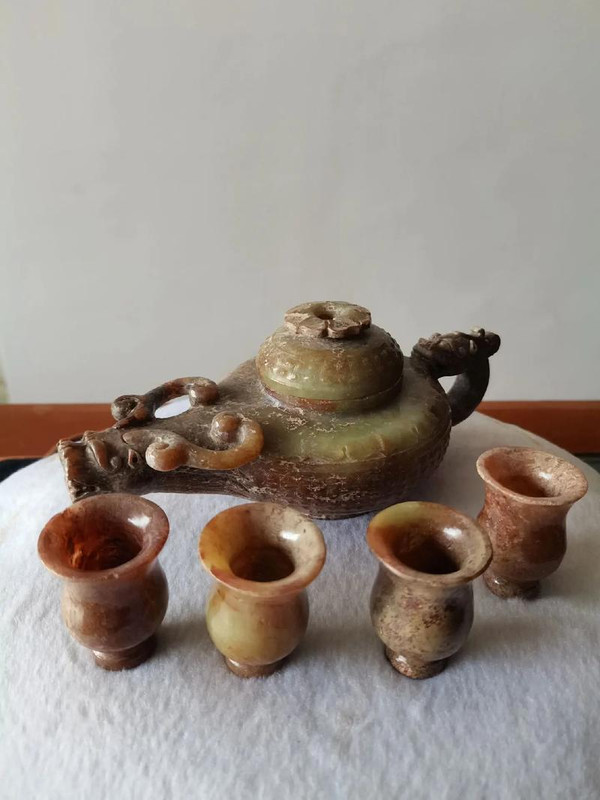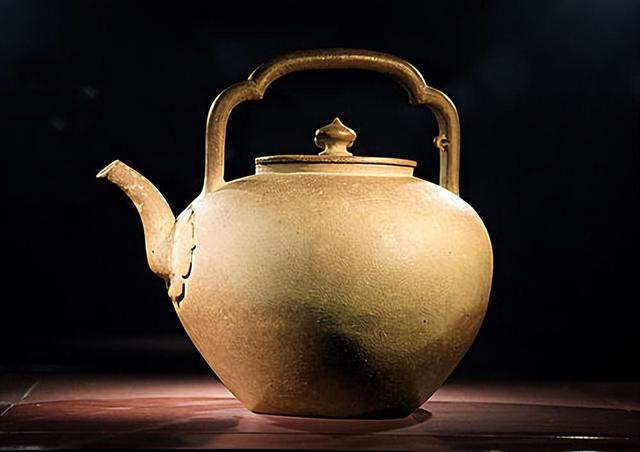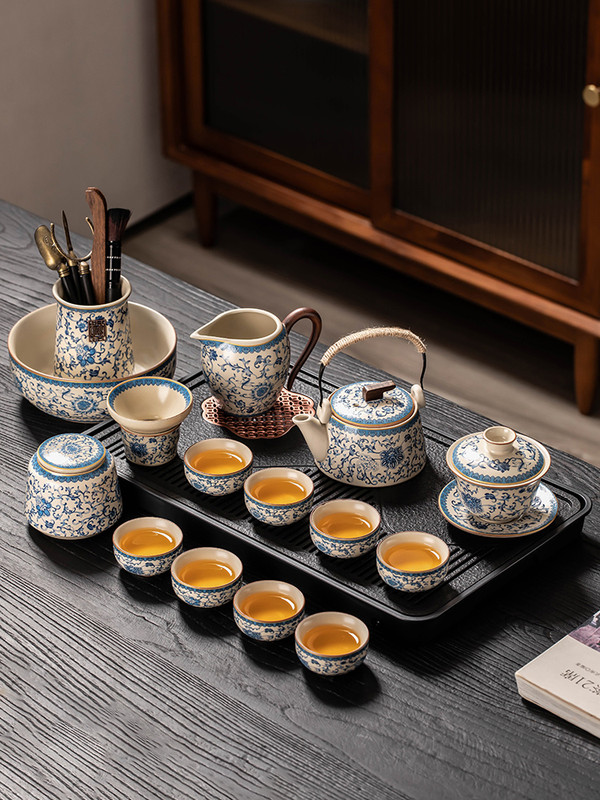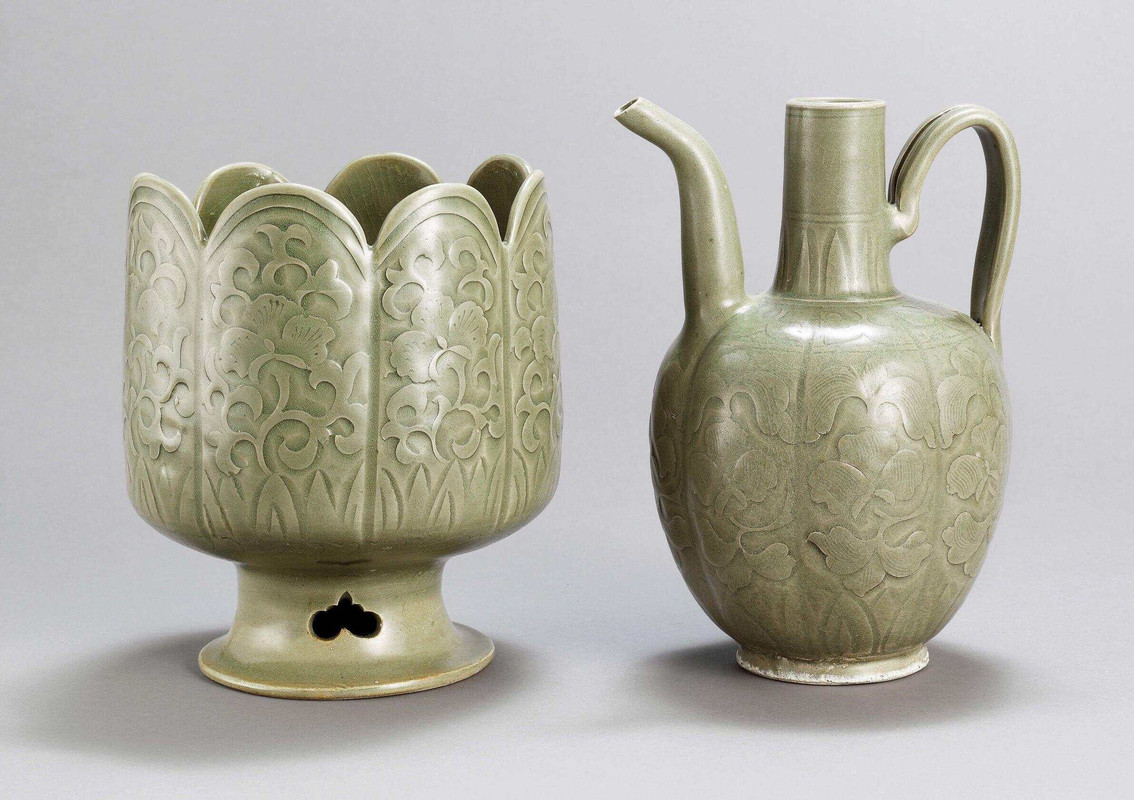The Qing Dynasty (1644–1912 CE), China’s last imperial era, marked a period of unprecedented artistic opulence and global cultural exchange. Tea utensils from this period reflect a synthesis of Ming Dynasty minimalism, Manchu aristocratic preferences, and Western Baroque influences, creating a unique aesthetic that bridged East and West. Qing tea ware, often crafted from jade, enamel, and multicolored porcelain, became symbols of imperial power and diplomatic gift-giving, while also catering to the rising merchant class and foreign traders.
1. The Manchu Influence: From Nomadic Practicality to Courtly Splendor
The Qing rulers, originally Manchu nomads, adapted tea utensils to their cultural traditions:
- Silver-Gilt Tea Sets: Modeled after Manchu qianxiang (traveling tea sets), these sets included a kettle, cups, and a sugar bowl, all mounted on portable trays for hunting expeditions.
- Jade Tea Caddies: Carved from Hetian jade, these caddies featured peony or bat motifs, symbolizing prosperity and longevity in Manchu-Han culture.
- Brass Tea Boilers: Inspired by Tibetan chabu (butter tea) vessels, these boilers had wide spouts for pouring into communal bowls during court audiences.
2. Ceramic Innovation: Famille-Rose and the “Three Great Kilns”
Qing potters revolutionized porcelain techniques, creating vibrant new styles:
- Famille-Rose: Introduced in the Kangxi reign (1662–1722), this pink-tinged enamelware depicted Western-style pastoral scenes, such as shepherdesses with lambs, alongside Chinese landscapes.
- “Three Great Kilns”: Jingdezhen (porcelain), Yixing (purple clay), and Dehua (blanc de Chine) dominated production:
- Jingdezhen: Produced “peach-bloom” glaze teapots, their pink-and-white hues resembling ripe fruit.
- Yixing: Revived Ming-era purple clay, with artisans like Chen Mingyuan creating “square-bamboo” teapots inscribed with Tang poetry.
- Dehua: Crafted “blanc de Chine” tea bowls, prized in Europe for their milky translucence.
3. The Rise of the Merchant Class: Tea Houses and Vernacular Utensils
Qing urbanization spawned bustling tea houses, where merchants and artisans gathered. Utensils here prioritized durability and affordability:
- Clay Tea Jars: Unglazed stoneware jars, inscribed with proverbs like “Tea Brews Friendship,” stored compressed tea for export.
- Bamboo Tea Scoops: Carved with folk motifs (dragons, phoenixes), these scoops were sold in sets with matching cups.
- “Mandarin Duck” Tea Sets: Porcelain sets featuring paired ducks (symbolizing marital harmony) became wedding gifts in Jiangnan.
4. Global Exchange: Tea Utensils as Diplomatic Gifts
The Qing Dynasty’s maritime trade expanded tea culture globally, with utensils serving as cultural ambassadors:
- “Clobbered” Enamelware: Jingdezhen artisans applied European-style floral motifs over Chinese landscapes, creating hybrid designs for Dutch and British markets.
- Yixing Teapots in Europe: The Dutch East India Company imported over 20 million Yixing pots by 1700, with European potters like Johann Böttger (Meissen) replicating their shapes.
- Qianlong’s “Ten Thousand Spring” Tea Set: A 1793 gift to George III, this gold-enamel set included a kettle shaped like a pineapple (symbolizing hospitality) and cups with the Qing seal.
5. Religious Syncretism: Buddhism, Christianity, and Tea
Qing tea utensils mirrored religious pluralism:
- Buddhist Offering Bowls: Tibetan monasteries commissioned silver bowls inscribed with Sanskrit mantras and Eight Treasures motifs.
- Christian-Inspired Tea Sets: Missionary-influenced designs featured cross-shaped strainers or cups with Latin inscriptions like “Carpe Diem.”
- Daoist Alchemy: Qing potters revived Ming qingbai glazes, using copper and iron oxides to create “moonlight” effects, embodying Daoist harmony with nature.
6. Legacy: From Qing Courts to Global Tea Culture
Qing tea utensils shaped modern tea practices worldwide:
- Yixing Teapots: Today, these pots remain the global standard for oolong and pu-erh brewing, with modern artisans like Gu Jingzhou reviving Qing-era techniques.
- Famille-Rose in Europe: Qing enamelware inspired 18th-century European “chinoiserie” crazes, with French Sèvres porcelain mimicking peach-bloom glazes.
- Tea Diplomacy: Qing gift-giving traditions continue in modern state visits, where tea sets symbolize cultural exchange.
Conclusion: A Civilization Brewed in Global Confluence
Qing Dynasty tea utensils encapsulate the era’s duality—a bridge between imperial grandeur and vernacular creativity, local traditions and global currents. By blending Manchu practicality, Han craftsmanship, and Western aesthetics, they created a new visual language that resonated from Guangzhou to London. Today, these artifacts—whether a Famille-Rose teapot or a silver-gilt caddy—stand as testaments to a dynasty where tea was not merely brewed, but brokered. As the Qing poet Yuan Mei wrote, “In the steam of tea, the world’s four corners meet”—a metaphor for an empire that turned a humble leaf into a global lingua franca.
